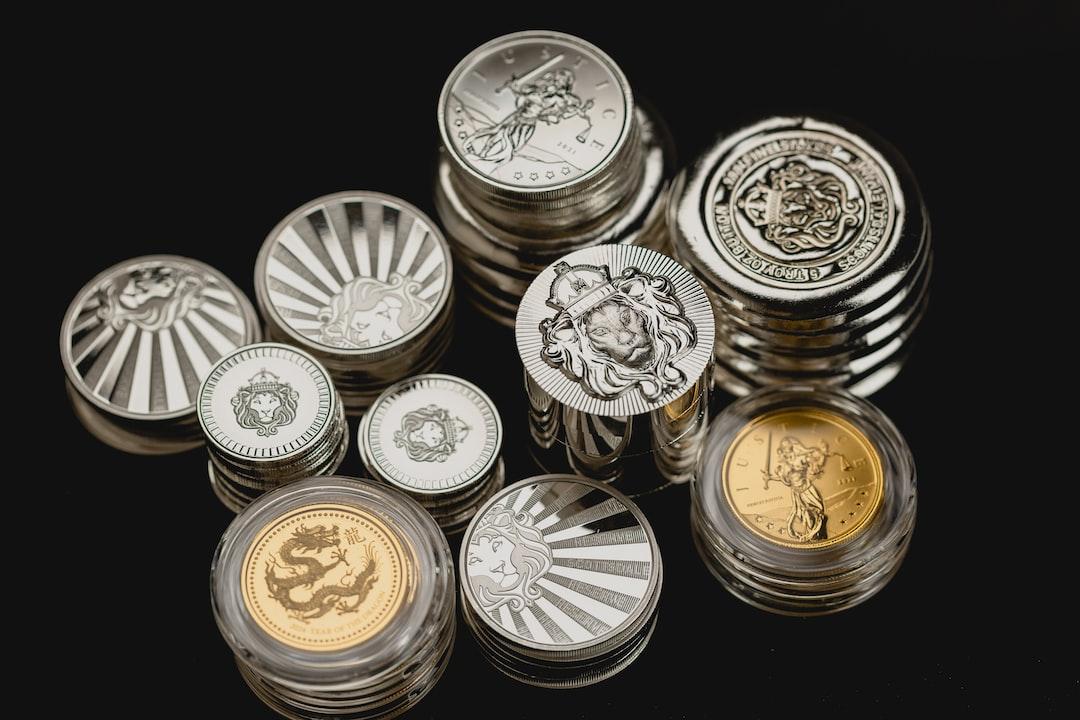Cryptocurrencies Make Strong Comeback in 2024, 2025 to Continue the Brilliance
Cryptocurrency winter? Over. Decline of the crypto empire and courtroom dramas? Things of the past. Survivors? Tested in battle, with sharp focus, as if in a new gold rush.
After years of conflict with the U.S. Securities and Exchange Commission (SEC), Bitcoin and Ethereum exchange-traded funds (ETFs) have finally arrived. According to the cryptocurrency research firm K33 Research, as of December 16, the U.S. Bitcoin ETF held assets worth $129 billion, surpassing the $125 billion of gold ETFs.
Market excitement post-U.S. election, coupled with Donald Trump’s promise to make the U.S. the “world capital of cryptocurrencies” and establish a strategic Bitcoin reserve, led Bitcoin prices to briefly exceed $100,000.
Solana is seizing development opportunities, thanks to the rise of memecoin speculation and new narratives like DePIN. DePIN is a network utilizing blockchain technology to decentralize control and ownership of physical infrastructure. Platforms like Polymarket (where users can bet on U.S. presidential election results) and the survival game Off The Grid have seen success in mainstream markets. A new wave of “degens” are betting on tokens like fartcoin and dogwifhat, both with market values exceeding $1 billion.
Rob Hadick, a general partner at the San Francisco-based cryptocurrency venture capital firm Dragonfly, stated, “Cryptocurrency has entered mainstream consciousness in ways unprecedented in 2021; it is now a sustainable long-term asset class that will have a voice and play a significant role.” “If you look at cryptocurrency’s impact on elections, be it political donations or its promotion among legislative bodies and presidential candidates, it’s unprecedented, marking a significant step towards cryptocurrency legitimization.”
As Trump and a group of cryptocurrency-supporting officials prepare to take office, industry insiders herald the “golden age of cryptocurrencies.” Here are the brewing trends:
Historic highs and U.S. Bitcoin reserves
The art of bold price predictions is back in vogue. Cryptocurrency asset management company Bitwise predicts that if the U.S. establishes a strategic reserve akin to oil or gold, Bitcoin prices could reach $200,000 or even $500,000. The logic is that the U.S. official Bitcoin reserve would trigger global FOMO.
At the July Nashville Bitcoin conference, Trump proposed using 200,000 Bitcoins confiscated from criminals (worth $21 billion) to kickstart the reserve. However, the legal pathway remains unclear; whether it requires Congressional approval or can be unilaterally actioned by the executive branch.
Senator Cynthia Lummis, a cryptocurrency supporter, proposed a reserve scheme operated by the Treasury Department in July. Skeptics warn that Bitcoin’s volatility could jeopardize financial stability. Trump remains silent on whether the U.S. will purchase more Bitcoin publicly, adding another layer of uncertainty.
Resetting cryptocurrency regulation: Crypto-friendly Washington
The new administration is poised to be the most crypto-friendly to date. Key government appointments related to cryptocurrencies include:
– Securities and Exchange Commission (SEC): Former SEC commissioner and cryptocurrency advocate Paul Atkins is set to replace crypto antagonist Gary Gensler, known for suing and enforcing against crypto companies during his term.
– Commodity Futures Trading Commission (CFTC): Andreessen Horowitz policy chief and former CFTC commissioner Brian Quintenz is a popular choice to lead the agency.
– Treasury Department: Hedge fund billionaire and Bitcoin advocate Scott Bessent is Trump’s pick for Treasury Secretary.
– Commerce Department: Cantor Fitzgerald Executive Director Howard Lutnik, the primary custodian of Tether’s USDT reserves, will lead the department.
– AI and Crypto Czar: David Sacks, a long-time venture capitalist who previously worked with Elon Musk at PayPal, will oversee policies in two key areas to enhance Trump’s national competitiveness strategy.
House Financial Services Committee: Republican Congressman French Hill from Arkansas, along with the outgoing committee chairman Patrick McHenry, advocate for crypto-friendly legislation. Hill plans to prioritize the crypto market structure bill in the first 100 days and investigate the so-called “Choke Point 2.0,” a move many believe unfairly targets the crypto industry through de-banking practices.
“This is a real opportunity to shape good policies for the industry,” said Kristin Smith, CEO of the Blockchain Association based in Washington, representing over 100 cryptocurrency companies. “The White House has indicated this is a priority. I think we’ll see collaborative efforts across government departments, legislation driving market structure and stablecoin, and a significant return of innovation to the U.S.,” she added.
New Crypto IPOs and VC Investment Inflows
The process of crypto IPOs is heating up. Bitwise lists five companies likely to go public next year:
– Circle: The issuer of the second-largest stablecoin USDC, quietly filed for an IPO in January this year.
– Figure: Known for blockchain-based financial services like mortgage loans, personal loans, and asset tokenization, has been exploring going public since last year.
– Kraken: The U.S.-based cryptocurrency exchange’s IPO plans date back to 2021.
– Anchorage Digital: Its status as a Federal Chartered Bank may pave the way for its listing.
– Chainalysis: A leader in blockchain compliance and intelligence services, is likely to go public.
Additionally, Hadick from Dragonfly predicts, “I expect the LP (limited partner) market of crypto venture firms to improve; they’ll want to channel more funds into cryptocurrencies. Many traditional Web2 crossover funds will re-enter the Web3 space. We are already seeing this trend in certain areas like stablecoins and payments.” He added that VC transactions often lag behind public market price hikes by a quarter or two.
Cryptocurrency-related Companies Included in Major Stock Indices
MicroStrategy’s stock has surged over 400% this year. With new accounting rules allowing companies to reflect their Bitcoin investments’ market value in financial statements, the company is now part of the Nasdaq 100 index, with analysts predicting its inclusion in the S&P 500 index’s top 100 companies soon.
This change could see MicroStrategy entering index-tracking funds, adding to the investment portfolios of numerous American investors. MicroStrategy’s co-founder and chairman Michael Saylor’s “Bitcoin treasury” strategy (selling bonds and stocks to accumulate Bitcoin) has propelled the $86 billion company into the top 100 companies in the S&P 500 index.
Analysts suggest that Coinbase, up 70% this year, might also join this coveted index.
Stablecoin Surge
With the highly anticipated stablecoin legislation on the horizon in the U.S., the stablecoin industry is poised for explosive growth, with market values potentially doubling to $400 billion. According to Bitwise data, stablecoin trading volumes reached $83 trillion in 2024, almost on par with Visa’s $99 trillion payment volume.
Tether and Circle still dominate the space. However, Hadick warns that if they continue to operate more like asset management companies than payment firms, their growth could stagnate quickly.
In October, Stripe acquired the stablecoin platform Bridge for $1.1 billion, signaling that stablecoins may become a cornerstone of fintech. Stripe calls it the “superconductor of financial services,” praising its unmatched speed, low costs, and global impact. Robinhood is also exploring building a global stablecoin network.
Meanwhile, the next generation of “Stablecoin 2.0” models is quietly emerging. Ceteris, research director at New York cryptocurrency analysis firm Delphi Digital, explains, “There are many new stablecoin models offering token holders or actual app users revenue incentives. These models are disruptive, in my view.”
Acceleration of Traditional Asset Tokenization
BlackRock CEO Larry Fink has been advocating for tokenization for years. From real estate to art, everything may soon have tokens. Tokenization’s biggest benefits include instant settlement, lower costs than traditional securitization, round-the-clock liquidity, and transparency.
Three years ago, the cryptocurrency industry tokenized $20 billion of real-world assets (RWA), including private credit, U.S. debt, commodities, and stocks. Today, that figure is close to $140 billion. Venture capital firm ParaFi predicts that by 2030, the tokenized RWA market size could soar to $2 trillion, signaling significant shifts in asset ownership and trading.
New Applications, Better Infrastructure
The buzzword at the end of 2024 is AI agents. Get ready to witness the fusion of artificial intelligence and cryptocurrencies, a blend closer to science fiction.
This trend is already emerging. Take TruthTerminal, an AI agent that not only received $50,000 from Marc Andreessen but also became a millionaire through X social media. Its success stems from promoting a token based on early 2000s memes (the token’s anonymous creator transferred a large sum to TruthTerminal’s wallet managed by Andy Ayrey).
However, analysts approach this cautiously. Practical AI agents (such as those attempting to execute complex transactions across blockchains on behalf of users) are scarce and still in early stages. “The excitement around agents is because they are very novel,” said Ceteris from Delphi, “but for better or worse, it could be the biggest bubble of this cycle.”
While the blockchain industry remains fragmented and most decentralized applications have yet to become mainstream, the work to build robust infrastructure continues. Ceteris explains, “Solana is setting the trend for the high-throughput blockchain era, with nearly every new chain launched under this trend, thus birthing a plethora of cheap block space.”
And so, the narrative of cryptocurrencies has shifted from survival to prosperity. This is just a part of the surprises that may come next year. You can choose to prepare popcorn for this show or open your wallet for this opportunity. Caution is essential as the market will experience highs and lows. This time, the stakes seem higher than ever before.

